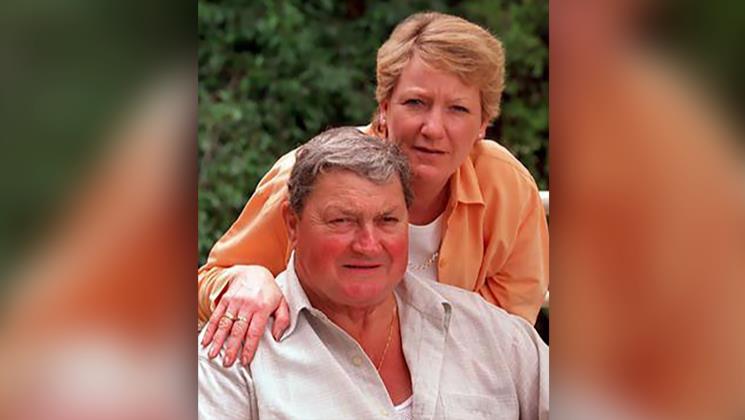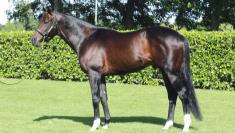
Across The Ditch - Ian McEwen
Over 50 years ago a brash, strong-willed Kiwi journalist landed at Essendon Airport to take on a role of chief executive of the Moonee Valley Racing Club.
Then committeeman and subsequent chairman, Melbourne thoroughbred auctioneer Bill Stutt, interviewed McEwen while attending yearling sales across the Tasman in 1969.
After investigations, interviews and a general view of the applicant, Ian McEwen was hired – the first person outside the Cox family to oversee they-to-day operations of the club.
His appointment broke with tradition. It had ignored the usual pecking order of executives in Australia in the 1960s.
Ian McEwen was to re-invent racing on a level never seen before. His father was racing editor of The Dominion newspaper and McEwen, himself, was racing editor of the Truth before taking the role of managing secretary of the Bay of Plenty Racing and Harness Club as well as the Whakatane Racing Club at Tauranga.
McEwen, who spent the next 20 years at the Valley, had the mindset of never say die.
His first and most dramatic move was to change the Cox Plate from a minor bit part player, somewhat overshadowed by the Moonee Valley Gold Cup run the week after the Caulfield Cup, into one of the most renowned weight-for-age races in the world.
He demanded, and got, more money to pump the Cox Plate up to not only Moonee Valley’s big-ticket item of the Australian racing scene but watched as it changed the structure of racing at this small, little track.
“When I came to Australia, it was the big three – the Caulfield Cup, Moonee Valley Cup and the Melbourne Cup.
“They were just handicaps. We needed to enrich the Cox Plate and take it from a ho-hum on Moonee Valley Cup Day to a race that we would revere”, he said.
By the mid-70s, the Cox Plate swelled from a $30,000 to $125,000 in stakes money.
McEwen, after sweeping into power, changed practically every dynamic at the Moonee Valley circuit. He and his committee oversaw the development of a new grandstand. No more would the racecourse be closed 345 days a year, McEwen courted the trots over from the Showgrounds and while luring corporate functions and expos to the multi-storey venue.
He got rid of pie stalls and cold fish and chips and replaced them with every Asian and European food that a punter might like. They were given glasses instead of paper cups to drink out of, the general public were offered viewing boxes with waiter service, never before had change swept the sport.
“We are going through a transitional time. We’ve got loads of money from the TAB so that’s got to go back into the industry. Make it so attractive that they’ll come from over the river to enjoy this racecourse. You can bet in luxury, drink in luxury and eat in luxury because that’s what the new generation will demand.”
But it was the Cox Plate that he was determined to lift into one of Australia’s greatest races.
He hired a sophisticated marketing team headed by former Bellbird actor, Gary Gray, and then he enlisted arguably one of the world’s great writers in Les Carlyon to write for the occasion.
McEwen demanded the race was the “pure silk department”.
He then opened the racecourse up on the Tuesday morning before the race and fed the adoring public sausages and eggs while Cox Plate hopefuls went through their paces. Thousands of racegoers flocked in at daybreak on the Tuesday and then another major function later that morning would announce the field.
The following night’s Ball, that was the hardest ticket to obtain in Melbourne, when 700 people would journey to the course for the final function before the great race.
It’s said that McEwen would arrive at work at 5 o’clock on the morning of the Ball and would personally oversee the seating arrangements.
Controversy was just around the corner when Cole Diesel won the Caulfield Cup and connections were hoping that seven days later he could win the Cox Plate double.
McEwen said, no way. The horse was eliminated from the race because he basically wanted only weight-for-age stars as he believed handicappers were inferior for the event.
Nothing was too much for “Mr Mac”.
If he saw an idea in America he’d find a spot for it at Moonee Valley. If Cox Plate needed more pizazz, they got it and from the late seventies fell out with their CEO from Caulfield when he dared to have an advertising campaign on TV and radio that started at 8 o’clock on Caulfield Cup morning.
Some have even said that Peter V’landys is a latter day Ian McEwen. Eyes only for his patch.
Moonee Valley was dubbed “the action attraction” by spin doctors hired by McEwen.
He painted a picture through his writers such as Les Carlyon that to win a Cox Plate was to climb the stiffest of mountains but if successful would sniff the rare air of success once at the peak.
So as the horses move into the gates for this year’s Cox Plate and you marvel at the depth of the field and their group one CVs, it is possible that none of this would have been achieved without a strong-willed journalist who read the play better than any administrator had before.








